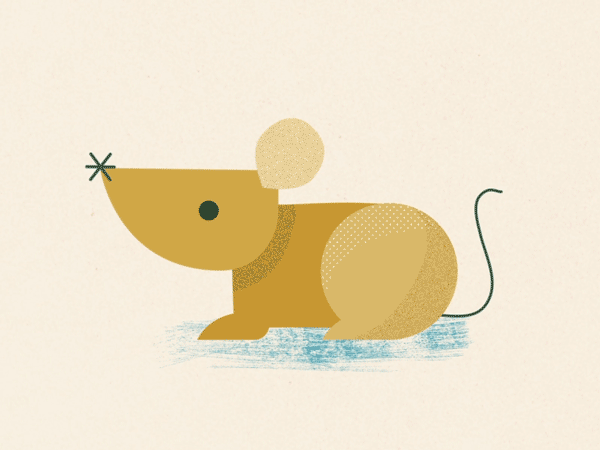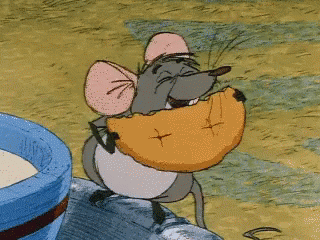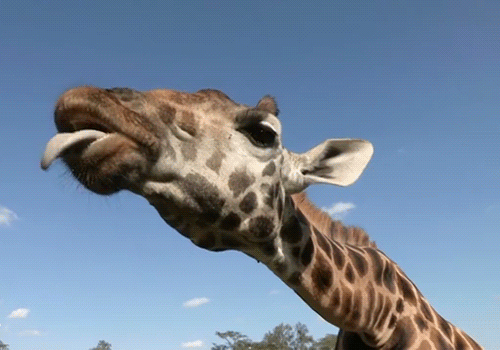

Kara Brinkman
Future teacher, current student
Wishy Washy W

By Kara Brinkman
Emergent Literacy Lesson
Rationale: This lesson will help children identify the phoneme /w/. Students will learn to recognize /w/ in spoken words by learning a memorable representation with waves and the letter symbol w, practice finding /w/ in words, and apply phoneme awareness with /w/ in phonetic dude reading by distinguishing rhyming words from beginning letters.
Materials: primary paper and pencil, chart with "wade is worried he will wash away with the waves"; drawing paper and crayons; handheld mirrors; Kevin Henkes's wemberly worried(Greenwillow Books, 2000), word cards: worry, way, what, wash, wet, well and wag; assessment worksheet identifying pictures with /w/(URL below).
1. Procedures: Say "Our written language is a secret code. The tricky part is learning what letters stand for-the mouth moves when we make when we say words. Today we are going to work on spotting the mouth move that /w/ makes. We spell /w/ either the letter w. W looks like a wave and /w/ sounds like the waves in the ocean.
2. Let's pretend to make a wave motion, while making the sound of the waves, /w/, /w/, /w/. [give out hand held mirrors] using your mirror notice what your lips are doing. They begin in a closed/pursed/wrinkled circle and move open, while pushing out air from your mouth to make the sound /w/ makes.
3. Let me show you how to find /w/ in the word sway. I am going to exaggerate sway by stretching it out in slow motion. Watch for when my lips first begin to be pursed together and then open. Ss-ww-aa-yy. Slower: Ssss-wwww-aaa-yyyy. Did you feel it? On the second phoneme I noticed that my lips pursed together then begin to blow air out of my mouth to make the /w/ sound in sway.
4. [already printed on chart] now let's look at our chart. I have a tongue tickler for us to try. This is the tongue tickler "Wade is worried he will wash away with the waves." Let's say it together and this time let's say it three times in a row. Now, let's say it again and this time say it only once, but I want us to stretch out the /w/ at the beginning of words. "Wwwade is wwworried he wwwill wwwash away wwwith the wwwaves." I have one more way that we can say it. This time let's say it cutting /w/ off the word. "/w/ade is /w/orried he /w/I'll /w/ash away /w/ith the /w/aves."
5. [students need to take out primary paper and pencil]. We use W to spell /w/. The capital W and the lowercase w look a lot alike. Their size is what makes them different from each other. Remember when we are writing a W we start at the roof top. We slant down.up, down, up. Now let's look at how we write a lowercase w. Start at the fence of your paper and slant downwards to the sidewalk then slant up again to the fence, slant down to the sidewalk, slant up to the fence. Notice that we use to the motion in making a capital W, but we only allow the lowercase w to be as tall as the fence. I want to see everyone's w. After I put a stamp on your paper, I would like everyone to write the same thing nine more times.
6. Response time from students. Call on students to give their responses and allow them time to explain: "do you hear /w/ in wait or bait? Well or Bell? Wiggle or giggle? Tray or way? Wave or save?" Now let's see if you can recognize the /w/ mouth movement in some of these words. Gently move your mouth open while blowing out air if you hear /w/: work, week, make, wet, pet, dog, wheel.
7. Say "now let's read a story. Kevin Henkes writes about a little mouse that worries about everything. Her name is Wemberly. Everyday wemberly is worried about something different. The title of the book is Wemberly worried. Let's read this book to see what she worries about. While we are reading, I want you to listen out for words that have /w/ in them. I would like for you to make a worried face when you hear a word that has a /w/ in them.
8. Show WORRY and model on how to figure out if it is worry or furry. The /w/ tells me to purse my lips when saying worry. [show word cards] now let's have you try some words: WAY: way or say? WASH: wash or
9. Assessment: [worksheets, pencils and crayons needed] Hand out the worksheet "What begins with W?" Students are supposed to complete words by writing in the beginning letter then they are to color the picture that begins with w. Call on students to share aloud which pictures that they colored. Students will also be observed if they make a worried face when recognizing /w/ when reading aloud.
Reference:
Teri crum, Washing Machine Worries
http://www.auburn.edu/academic/education/reading_genie/adventures/crumel.htm
Long, Angela Carroll. Wemberly’s Wonderful Wonders. Inspirations. 2003
Assessment worksheet:
Say Cheese Please!!
By Kara Brinkman
A Beginning Reading Lesson
Rationale:
This lesson teaches children about the long vowel correspondence ee = /E/. In order to be able to read, children must learn to recognize the spellings that map word pronunciations. In this lesson children will learn to recognize, spell, and read word containing the spelling ee. They will learn a meaningful representation (Camera taking a picture of the cheese, saying cheeeese!), they will spell and read words containing this spelling in a letterbox lesson, and read a decodable book that focuses on the correspondence ee = /E/.
Materials:
Graphic image of little boy smiling saying "Cheeese"; cover-up critter; A row of five phoneme letterboxes; Letter tiles for the letterbox lesson {f, e, e, t, r, s, h, p, t, c, n}, Word card with the DEEP, KEEP, CREEP, GET, SET; Decodable text: Lee and the Team; and assessment worksheet.
Procedures:
-
Say: In order to become expert readers, we need to learn the code that tells us how to pronounce words. We have already learned to read short vowel words with e, like bell, and today we are going to learn about long E and the sound it makes. When I say /E/ I think of taking a picture and saying “chEEEEEse!” for a picture [show graphic image]. Now let’s look at the spelling of /E/ that we will learn today. One way to spell /E/ is ee.
-
Say: Before we learn about the spelling of /E/, we need to listen for it in some words. When I listen for /E/ in words, I hear e say its name /E/ and my lips make a smiling face, where the corners of my mouth go upwards. I’ll show you first: Meet. I heard e say its name and I felt my mouth smile and the corners of my mouth go upwards. There is a long E in meet. Now I’m going to see if it’s in ten. Hmmm I didn’t hear e say its name and my mouth didn’t make a smile and my lips didn’t go upwards. Now you try. If you hear /E/ then go “chEEEEEse!” like you’re smiling for a picture. If you don’t hear /E/ say, “that’s not it”. Do you hear the /E/ sound in: DEEP, KEEP, CREEP, GET, SET?
-
Say: Now let’s look at the spelling of /E/ that we'll learn today. One way to spell /E/ is with the letters ee. Another way to spell it, is ea, but today we are going to focus on ee to make the /E/ sound. What if I want to spell feet? “He has smelly feet.” Feet are the objects at the end of your body. To spell feet in letterboxes, first I need to know how many phonemes I have in the word so I will stretch it out and count: /f/ /E/ /t/. I need three boxes. I heard the /E/ right before the /t/, so I’m going to put ee in the second box. I make sure to put the ee in the same box, because they make the same sound. The word starts with /f/, so I will put the f in the first box. I’m going to say it again slowly, /f/ /E/ /t/. [Point to letters in boxes when stretching out the word: /f/ /e/ /e/ /t/.] the missing one is /t/ = t.
-
Say: Now I’m going to have you spell some words in letterboxes. We will start using three boxes to spell tree. “I climbed up in the tree’. What should go in the first box? [respond to children’s answers.] What goes in the second and third boxes? Are you using your ee spelling? Are you putting the like sounds in the same box? Ill check your spelling as I walk around the room. [Observe progress]. You’ll need three boxes again for the next word. Listen for like sounds and the beginning sounds. Also, make sure to listen for the /E/ sound. The next word is sheep. “The sheep says baaaaa”. Do you hear the /E/ sound? Is your mouth smiling? Now for our last word we are going to need five boxes to spell the word, street. “The chicken ran across the street”. Make sure you stretch the word out slowly, so you know what goes in each box. Don’t forget to include same sounds in the same box.
-
Say: Now I am going to let you read the words you’ve spelled, but first I’ll show you how I would read a tough word. [Write the word screen on the board and model reading the word]. I see that ee next to each other so I will say /E/. I’ll use my cover-up critter to get the first part. /s/ /c/= /sc/ + /r/ = scr. Now I’m going to blend that with /E/ = /scrE/. Now all I need is the end, /n/= /scrEn/. Screen; that’s it. Now its your turn, everyone read the words together, after we read them together I will call on each of you to read a word.
-
Say: You’ve done a great job reading words with our new spelling for /E/: ee. Now we are going to read a book called Lee and the Team. This is a story about a guy named Lee, who is on a team. Lee and his team have a game and they are late for it. Do you think they will make it in time? Will the team listen to Lee? Let’s pair up and take turns reading Lee and the Team and find out if the team makes it to their game. I will walk around the room to see how you’re doing!
-
Say: That was a good story. Did the team make it in time for their game? That’s right, yes they did! Did they listen to Lee? That’s right, no they didn’t they were being lazy. What made them get up and run to the game? That’s right, a bee did. Before we finish up our lesson about one way to spell /E/ = ee, I want to do a worksheet. The worksheet has eight words on it and eight pictures at the bottom. I would like you to read the words and then match the words to the pictures at the bottom. I will collect the worksheet when you are finished!
References:
Geri Murray, Oh I didn't know: https://sites.google.com/site/readingwritingconnection/beggingreadingdesign
Emma Wall, EEE! Says the Seal! https://ecwall2014.wixsite.com/lessondesign/beginning-reading-design
Murray, G. (2004) Lee and the Team. Reading Genie.
Assessment worksheet: https://www.pinterest.com/pin/132434045274719581/

Contact me: Kgb0013@tigermail.auburn.edu
Click here to return to applications:http://wp.auburn.edu/rdggenie/home/classroom/applications/
IF YOU TEACH A READER FLUENCY
By: Kara Brinkman
Growing Independence and Fluency Lesson
Rationale: It is important for children to learn how to become fluent readers, so that their reading can become more effortless and automatic. Fluency allows students to focus more on what they are reading and comprehend the story instead of stopping constantly, which takes away from the story itself. This lesson is designed to help students improve their fluency skills through crosschecking and repeated timed reading.
Materials: Dry erase marker (for writing “If you give a mouse a cookie, he’s going to ask for a glass of milk” on the board), dry erase board, Pencils for each group, stopwatches, Class set of “If You Give A Mouse A Cookie”, Individual sheets of paper with the sentence (“When you give him the milk, he’ll probably ask you for a straw) written on it, individual sheets with numbers on it with a mouse at the end, A cutout of a cookie that they can move along on the paper.
Procedure:
-
Say: “Today we are going to work on becoming a more fluent reader! Being a fluent reader, means being able to read effortlessly and quickly. This is important so that when we are reading, we get to enjoy the book and not have to stop and miss the meaning behind the book! When we are fluent readers, reading can be more fun!!”
-
Say: “I am going to read a sentence once, just like a reader who is not fluent at reading would and then I’m going to read the same sentence like a reader who is fluent would. Listen closely to the difference. (write the sentence on the white board-When you give a mouse a cookie-) “I-f y-ou g-i-ve a m-ou-se a c-oo-k-ie, he-s g-o-ing t-o a-sk f-o-r a g-l-a-ss o-f m-i-lk”. “How did that sound? It didn’t sound quite right, did it? Now let me read it again. Notice my speed this time. “When you give a mouse a Cookie, he’s going to ask for a glass of milk.” That sounded much better, didn’t it?” Then ask “What do you think I did differently the second time I read the sentence?”
-
When we read a sentence the way I did the first time, it is easy to get confused and not understand what we are reading. When this happens, we have to crosscheck what we read to figure out what the sentence is actually saying. By crosschecking, we can learn and improve so that we can become fluent readers. It is easier to understand what we are reading when it is read fluently. Now, let’s work on improving our reading skills by reading and re-reading.
-
Say "Now I want you to get in groups of two. I am going to give you each a sentence to read (“When you give him the milk, he’ll probably ask you for a straw”). I want you to read the sentence to each other out loud. Listen to how it sounds the first time you read it. Then I want you to read the sentence five times to yourself. Reading the sentence repeatedly will help you with your speed and accuracy. Then I want you to read the sentence again out loud to your partner. Notice the difference in how it sounds this time. What sounded different? Was it better or worse? What makes it sound better? Good job!!"
-
Say "Now let's try this with a real book! Say: “Now that you are with your partner, I am going to pass out some stopwatches. I want each of you to read the book aloud to your partner. You are going to read the book 3 times. I want one of the partners to time the other partner for one minute while they are reading. If you come to a word that you are unfamiliar with, use the cover up method to try to figure it out. If you still cannot figure it out, look at the rest of the sentence to see if you can figure it out. If those options don't work, you can ask your partner for help. I will be walking around the room too, if you need help”
-
Say “Stop the timer at one minute, then count how many words your partner read during that time. When you figure out the number find it on your sheet that has a mouse on it and put the cookie at how many words you read in a minute. You are going to do this each time your partner reads, so three times in all you are going to record how many words your partner read in 1 minute. Make sure that you put a 1, 2 and 3 each time on your sheet to see how you are improving. After one partner has finished reading three times, switch roles with your partner and do the same thing.”
Assessment: I will assess the students by looking at their progress chart. They will mark on the sheet where they began and where they ended and turn it in to me for me to evaluate. Hopefully by the end every student will have reached the mouse with the cookie. We will also have a review on the material that we have gone over, where I have them answer questions about the book to see if they comprehended the story. and participate in text conversations between reading.
10……20……30……40……50…….60……70……80…….90……100
(Cookie moves along the line towards the mouse)
Resources:
Abagail Rickerson, Something Smells like Fluency! https://acr0040.wixsite.com/abbyrickerson/growing-independence-and-literacy
McKee Cronier, Huh, What’s Fluency?!? https://hmc0021.wixsite.com/lessondeisgn2017/growing-fluency-design
Meg Hall, On your mark, get set, read!
http://www.auburn.edu/academic/education/reading_genie/doorways/hallmgf.htm
Numeroff, Laura Joffe, and Felicia Bond. If You Give a Mouse a Cookie. Laura Geringer Book, an Imprint of HarperCollins Publishers, 2015.
Contact me: Kgb0013@tigermail.auburn.edu
Click here to return to applications:http://wp.auburn.edu/rdggenie/home/classroom/applications/

High There, Summarization!
By: Kara Brinkman
Rationale: Summarization is one of the most powerful strategies to learn to comprehend a text. A good summary asks two main questions: What is the text about? This question helps the student identify the topic of what you are reading. What is the point of the text? When a student answers this text, they have identified the main point of the article and thought about why the author wrote it.
Materials: Individual copies of “Giraffe” from kids.nationalgeographic.com, poster board with rules on it, pieces of paper for every student, highlighters for every student, pencils for every student, rubric for grading summaries
Procedures:
-
Explain to students why summarization is important. Say “Summarizing allows readers to read a long passage without having to remember every single word. Skilled readers can read a passage or story and be able to remember key points from the story without having to retell the whole passage.
-
Say “Lets go over some rules about summarization before we try to read a passage ourselves. When we are summarizing we delete any unnecessary information from the passage/story.
-
Say “I am going to pass around a stack of paper and I want everyone to get one sheet. Watch me as I fold this paper into a tri-fold. First, take the paper and fold it over 1/3 of the page. Then with the remaining part of the paper fold it behind the two parts. Your paper should be split into three sections: A title page, two middle pages and a back page. Now you try, and I’ll come around and help you if you need.
-
Say “Now that everyone has made their tri-fold, let’s talk about why we made our sheets of paper like this. We will be using our tri-fold as a study card to help us make a summary”.
-
Say “When doing a summary, we need to make sure to know the three main steps. 1. The first step in summarization is to pick out the most important details by highlighting them.
2. The second step is finding the details that are not important or not necessary to the story and crossing them out.
3. The third step is organizing the information you found in step one is an organized clear way. This is usually a sentence that sums up the article into a topic sentence.
Say “I wrote these on a poster board if you forget what they are.” (place poster board at the front of the room) Say “On the back of the last page of your trifold I want you to write down tips to remember about summarizing and the rules if you would like. Here is a tip to remember: Summaries should always be shorter in length than the information you are summarizing”.
-
Say “To continue our learning about animals, I am going to pass around an article now called “Giraffe” by National Geographic. Everyone needs their own copy. This article is about Giraffes and has a lot of cool facts about Giraffes and what they do for survival. Before we read let’s go over some harder vocab words that will be in the text. Grasslands, are a farmland occupied mainly by forage plans and grasses. This is where some animals or plants may live that are mainly filled with greenery. Predators, are any animal or other organism that hunts or kills other organisms. For example, a frog is a predator for a fly that is the prey. Congregate, this means to gather in a crowd or mass. An example of this is how we congregate in the lunchroom for lunchtime.
-
Say “When reading, make sure to focus on important information and ignore unimportant details. Highlight any details, you think could be important. Now as we read, we need to remember important information. For example, “Giraffes grow about 4 feet in their first year of life. A newborn giraffe is about 6 feet tall at birth and weighs about 150 pounds”. These two sentences are good details to write down in our middle section of our tri fold, because we are learning about Giraffes and these have good facts. However, “The giraffe could be considered the early warning system of the African grasslands” is a sentence we could cross out. This sentence is not vital information for the reader about Giraffes and it is very broad. When reading ask yourself “What is this article about?” “What is the main point?”
-
Say “Everyone’s tri-folds are looking great so far! Once you’ve read the whole article and gotten the main ideas and supporting details highlighted, I want you to write down a one-paragraph brief summary on the article. At the bottom of your article, write three new vocabulary words you learned from the article and what they mean.”
Assessment
For the assessment, I will review each student's topic sentences as well as look over each article for proper markings. Students will be assessed on how well they did on their summaries. I will use this scoring rubric to grade their summaries for the correct information:
In his/her summary, did the student...
• Delete significant information? YES / NO
• Write a topic sentence? YES / NO
• Write 3-5 good, concise sentences? YES / NO
• Select key information from the article? YES / NO
• Choose the correct main topic for this article? YES / NO
• List 5 new vocabulary words/definitions at the end? YES / NO
After this, I will also ask each student a series of comprehension questions as a reading comprehension check for the end of the lesson. The questions will include:
• How tall is the average giraffe?
• What is an animal that preys on Giraffes?
• What is a young Giraffe called?
References
Spot on Summarization by Wynne Pietrantoni
https://wynnepietrantoni.wixsite.com/mysite/rl-design
“Giraffe” National Geographic
https://www.nationalgeographic.com/animals/mammals/g/giraffe/
Contact me: Kgb0013@tigermail.auburn.edu
Click here to return to applications:http://wp.auburn.edu/rdggenie/home/classroom/applications/
